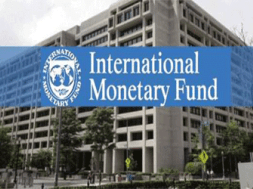The International Monetary Fund (IMF) has projected that Nigeria’s economy will grow by 2.1 percent in 2018.
The forecast which represents 0.2 percent from the 1.9 percent projected in October 2017 was contained in Fund’s World Economic Outlook Update, January 2018 released yesterday.
Though, the IMF upgraded its growth forecast for the global economy in 2018 to 3.9 percent, it however downgraded the 2018 and 2019 growth forecasts for sub-Saharan Africa to 3.3 percent respectively.
The IMF stated: “The growth pickup in Sub-Saharan Africa (from 2.7 percent in 2017 to 3.3 percent in 2018 and 3.5 percent in 2019) is broadly as anticipated in the fall, with a modest upgrade to the growth forecast for Nigeria but more subdued growth prospects in South Africa, where growth is now expected to remain below 1 percent in 2018-19, as increased political uncertainty weighs on confidence and investment.
“Global economic activity continues to firm up. Global output is estimated to have grown by 3.7 percent in 2017, which is 0.1 percentage point faster than projected in the fall and ½ percentage point higher than in 2016. The pickup in growth has been broad based, with notable upside surprises in Europe and Asia. Global growth forecasts for 2018 and 2019 have been revised upward by 0.2 percentage point to 3.9 percent. The revision reflects increased global growth momentum and the expected impact of the recently approved U.S. tax policy changes.
“Risks to the global growth forecast appear broadly balanced in the near term, but remain skewed to the downside over the medium term. On the upside, the cyclical rebound could prove stronger in the near term as the pickup in activity and easier financial conditions reinforce each other. On the downside, rich asset valuations and very compressed term premiums raise the possibility of a financial market correction, which could dampen growth and confidence.
“The current cyclical upswing provides an ideal opportunity for reforms. Shared priorities across all economies include implementing structural reforms to boost potential output and making growth more inclusive. In an environment of financial market optimism, ensuring financial resilience is imperative. Weak inflation suggests that slack remains in many advanced economies and monetary policy should continue to remain accommodative. However, the improved growth momentum means that fiscal policy should increasingly be designed with an eye on medium-term goals–ensuring fiscal sustainability and bolstering potential output. Multilateral cooperation remains vital for securing the global recovery.
“Two common policy objectives tie advanced, emerging, and developing economies together. First, the need to raise potential output growth–through structural reforms to lift productivity and, especially in advanced economies with aging populations, enhance labor force participation rates–while making sure that the gains from growth are shared widely. Second, the imperative to increase resilience, including through proactive financial regulation and, where needed, balance sheet repair and strengthening fiscal buffers. Action is particularly important in a low-interest-rate, low-volatility environment with potential for disruptive portfolio adjustments and capital flow reversals. The current cyclical upswing provides a unique opportunity for structural and governance reforms.”




